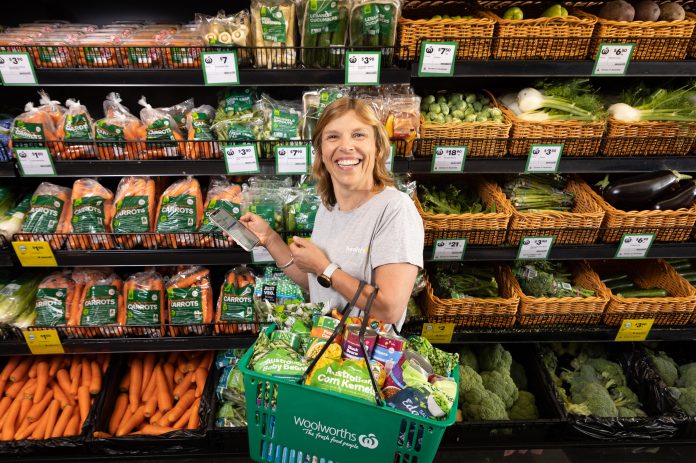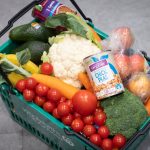Australians are buying more avocados and taking some positive steps to improve their health with a decline in the amount of discretionary foods purchased per day, and an increase in customers choosing healthier options in the supermarket aisles, according to a new report released by Woolworths Group’s digital wellness site HealthyLife.
“Despite the positive improvements, Australians are being urged to eat more vegetables as growing conditions improve and prices fall, with the report finding they are eating less vegetables overall than a year ago and not yet meeting the Australian Dietary Guidelines five core food group recommended servings.”
In its second year, the ‘Living Healthy Report’ examines the nation’s health and wellbeing, exploring nutrition, exercise and mental health whilst also analysing more than 900 million transactions at Woolworths supermarkets. The report determined the number of serves of the five core food groups and discretionary foods purchased across all retail outlets for eating at home between 2020-2022.
Key findings in this year’s report include:
- Aussies are purchasing only 2.6 of the recommended five serves of vegetables per day, compared to 2.8 serves in both 2021 and 2020, with consumption of vegetables likely impacted by supply constraints caused by flooding in key growing regions in 2022.
- Avocados were the only vegetable to increase in the number of serves sold, likely due to abundant supply and low prices.
- Grains, dairy and alternatives, as well as meat and alternatives, all reduced in total number of serves per day, purchased in 2022.
- One in four Australians (or six million people) are eating just one serve of vegetables or less each day.
- There was a 34% increase in customers choosing healthier alternatives in the supermarket aisles, with wholemeal bread being the top swap, using Woolworths’ healthier options tool.
- More than 182,000 Australians have signed up to HealthyLife’s free online Food Tracker tool, which shows shoppers the balance of their basket in servings of food, compared to the Australian Dietary Guidelines recommendations.
- There was an 11.6% decline in the amount of discretionary (sometimes) foods purchased per day which are classified as foods not necessary to provide the nutrients the body needs, such as desserts, processed meats and sweets, salty snack foods, and sports and energy drinks etc.
- Greek and ‘natural’ yoghurts remained the biggest contributors to yoghurt purchases, selling more than three times as many serves as flavoured yoghurts.
“Poor diet is the leading preventable risk factor for disease in Australia and economic modelling reveals adding just half a serve of vegetables each day could reduce the burden of disease and Australia’s health expenditure by $200 million per year.”
HealthyLife Chief Health Officer Simone Austin says, “Many chronic diseases are preventable, and our data helps show the way forward, by highlighting where dietary changes can be made to improve our physical and mental health.
“It’s a pressing matter: in 2018, Australians lost five million years of healthy life due to premature death and living with non-fatal illnesses. It’s more than just a long life we all aspire to – it’s also how many years of healthy living we have along the way.
“One of the most important things Australians can do for their own preventative health is to eat a balanced diet incorporating two servings of legumes each week and five servings of vegetables per day. Not only are you likely to feel healthier but you will also reduce the risk of chronic disease,” Ms Austin said.
The report also found that the perceived cost of healthy foods is the top reason among consumers for not eating healthy (33%).
“The good news is that vegetable prices are falling with improved growing conditions and normal levels of supply. Shoppers are advised to shop in season for the best quality fresh produce and also consider using frozen or canned products for convenience, nutrition and the value they offer. Currently capsicums, cucumbers, sweet corn, peas and beans, broccoli and cauliflower are all in great supply and at great prices.
“Woolworths Odd Bunch range also offers customers great value with a selection of imperfect fruit and veg that may be marked or shaped differently, but still tastes great, at a discounted price of at least 20 per cent compared to the standard range.”
The ‘Living Healthy Report 2023’ also looked at physical and mental health and found:
- Physical inactivity is the second biggest risk factor for the burden of disease in Australia however less than one in four Australian adults and children are meeting the physical activity guidelines
- From the start of the pandemic, 43.4% of Australians decreased exercising, despite the fact that at-home exercise equipment purchases increased through 2020 and 2021.
- 3.4 million Australians saw a health professional for their mental health in 2020–21.
- Over 20% of the population suffer from sleep problems and over 50% of Australians have at least one symptom of a sleep disorder.
- To date 105,000 ‘Ways to Well’ programs have been completed on the HealthyLife site. These include ‘Eat More Veg’ and ‘Ways to Move For Energy’ programs.
For more information, visit this link to download the full report.
For more information about Woolworths Group health initiatives, visit this link.







